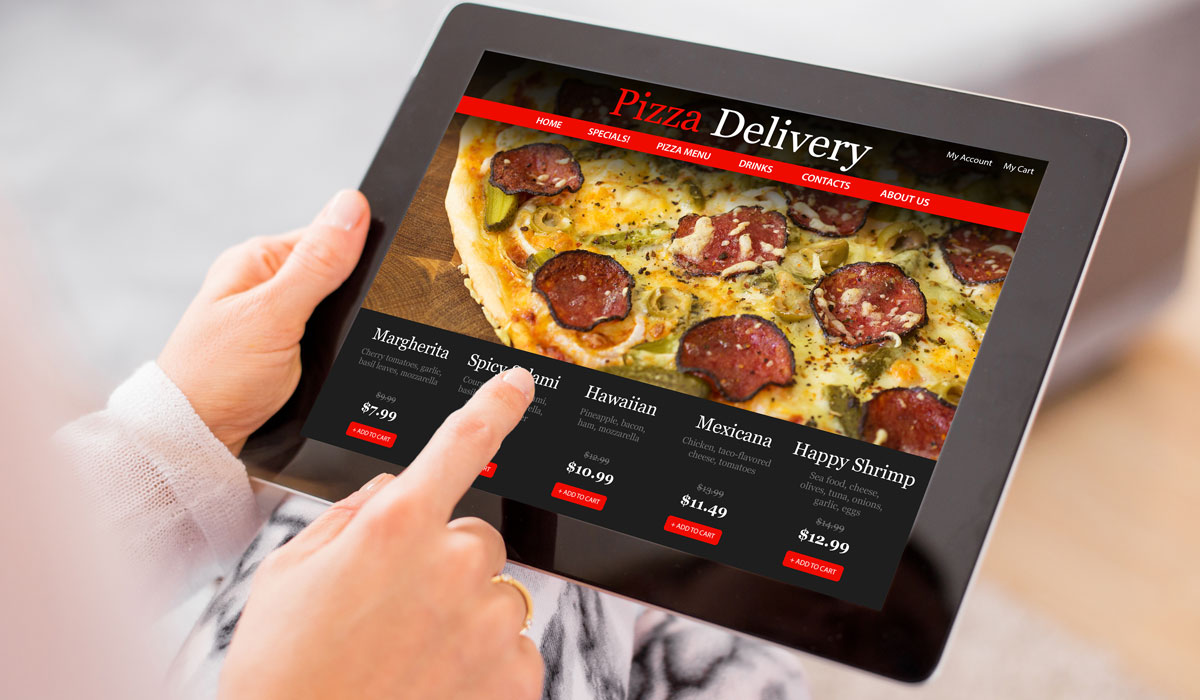Red’s Giant Hamburg of Springfield, Missouri, is credited with opening America’s first drive-thru restaurant in 1947. Popularized by In-N-Out shortly thereafter and eventually made commonplace by McDonald’s, and a host of other quick-service restaurants, the drive-thru format is now a feature of the American landscape.
Drive thrus are not going away any time soon. When a parent is out and about with a car full of kids, nothing beats the sheer speed of ordering, the convenience of not needing to unbuckle the car seats, or the privacy of eating alone.
But all of the things that are wonderful about the drive thru are even better with delivery. And all of the things you wish were different about a drive-thru … well, are.
A drive thru is more than anything about convenience. Nothing is more convenient than having dinner come to you; delivery prevents even the trip in the car to the drive thru Early on, the drive thru also enabled restaurants to focus investments on the food instead of the ambiance or the waitstaff. As Americans shift their dining behavior increasingly to delivery, restaurants will be forced to question their business models again—how do they optimize for food quality eaten off-premise? How do they reduce expenditures on features consumers aren’t using like waiting areas or dining rooms? How do they differentiate their brand through great food delivered hot and fresh?
And the least pleasant part of the drive-thru experience? Talking into a box hoping that the disembodied voice on the other end understood your order correctly? Delivery eliminates the risk by converting the ordering process to online—like everything else millennials buy. Restaurant delivery is meeting the needs of a new generation, just as drive thrus did for Baby Boomers. What began with the 1950s car culture turned into an American dream defined by large suburban homes surrounding a daily needs center with grocery stores, drug stores, and drive thrus. The shift toward dual-income couples accelerated the use of drive thrus as working mothers sought convenient ways to feed their families.
Millennial families are now commonly dual-income—often with the female as the primary breadwinner—and convenience is more important than ever. But millennials also value diversity, healthy choices, and denser urban living. There has been a significant increase in interracial couples, an increase in multi-racial neighborhoods, and an increase in the consumption of ethnic food (aka international cuisine). Organic food sales have grown more than 10x in a generation, with millennials being the most likely age group to seek out organic foods. And it is difficult, if not impossible, to build a new drive thru in a dense urban environment. (I know, I’ve tried.) As millennials come of age, convenience is redefined for the preferences and tastes of a new generation. The ultimate convenience—delivery—brings more options, healthier choices, and speed even in places where drive thrus cannot go.
Wait. Aren’t millennials all about experiences? How is delivery an experience? Just as millennials focus their spending on must-have experiences, so they also focus their time. If it isn’t a night to go out with friends exploring a new barcade, getting a bite to eat while watching a game, or interacting with the chef at a pop-up diner, then convenience trumps experience. After a long day at work with toddlers demanding attention, the ideas of going out or cooking are not that appealing. Having food show up as ordered through the same interface one uses to get toothpaste is. More, if these 20-somethings are in the middle of an experience with their friends or kids, they aren’t going to stop that experience to go get food. They want the food to come to them.
Morgan Stanley estimates that meals ordered online can grow 20x their current size to nearly half of restaurant sales in the U.S.What does the American landscape look like when half of restaurant consumption happens outside a restaurant? Why have an expansive parking lot? A large waiting area? Two hundred seats? Or even … a drive thru?













